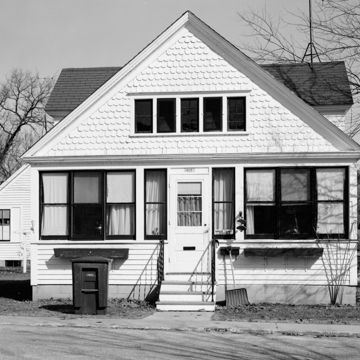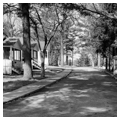Of the several Union army veterans’ organizations that emerged in the North after the Civil War, none was larger or stronger than the Grand Army of the Republic (GAR). Founded in 1866, the GAR did much to define America’s obligations to its war veterans, fighting for veterans’ pensions and for the commemoration of Memorial Day, among other causes. In the 1880s, Wisconsin’s legislature imposed a county tax to fund a relief program for disabled and destitute Civil War veterans. Around the same time, the state required communities to house indigent ex-soldiers and their wives and widows somewhere other than the traditional poorhouse. Thus, the Wisconsin Home for Veterans was established. The City of Waupaca donated land, state and federal governments provided funding, and the GAR provided administration. In the 1920s, the legislature opened the facility to veterans of the Spanish-American War, the Philippine Insurrection, and the Boxer Rebellion. By that time, the GAR was literally dying, and official control of the facility passed to the state.
Located along a wooded ridge overlooking Rainbow Lake—one of the “Chain O’ Lakes”—the home is a picturesque community of neat clapboard cottages, many embellished with Queen Anne details. Small cottages, larger staff residences, and dormitories were built along Bragg and Wright avenues between 1890 and 1925. William Waters of Oshkosh devised the model for the oldest houses. They are generally plain front-gabled structures, one-and-a-half stories tall, with gabled dormers. Decorative shingling in their gable ends includes fish scales and semicircles. The integral front porches of the staff houses were later screened in, perhaps to provide a place for sleeping on hot summer nights. The one-story cottages along Wright Avenue, home to married veterans regardless of rank, are much smaller. Several have only three rooms arranged front-to-back, shotgun style. Tiny screened porches project toward the street.
Waters designed a much grander house (c. 1890; Building 101, Wright Avenue) for the administrative commandant, on the edge of the residential district, overlooking the lake. A one-story screened veranda wrapping one corner and a three-story turret with a bell roof accentuate the house’s pronounced asymmetry. The first story’s clapboard walls give way to staggered shingles on the upper stories and to a radiating pattern in the pediment on the northeast corner. Latticework in the pediments and windows composed of small rectangular lights surrounding a larger pane in the upper sash add to the elegance.
The historic veterans’ facility also includes a wooden chapel, constructed about 1890, and a hospital, built in 1929. The nondenominational chapel (Building 303; Marden Avenue at Mitchell Avenue) is a simple one-story building with a front gable. A boxy three-stage steeple suggests Queen Anne style, with fish-scale shingles cladding the second stage and a pyramidal roof. The old hospital (Building 501; western end of Mitchell Avenue) is a sprawling Georgian Revival edifice, built of vermilion brick with red-tiled hipped roofs. A three-story central core is flanked by two-story blocks connected to the center by recessed hyphens, forming an H plan to provide good ventilation. The hospital replaced a smaller wooden structure, signaling the home’s move toward a more institutional approach and appearance. After World War II, that trend continued, with the focus of the veterans’ center shifting away from private residences and toward hospital and long-term nursing care. Many old cottages were razed and replaced with large institutional structures. Today, most of the historic buildings (other than the hospital) lie north of Marden Avenue, separated from the postwar structures by grassy parks.
























